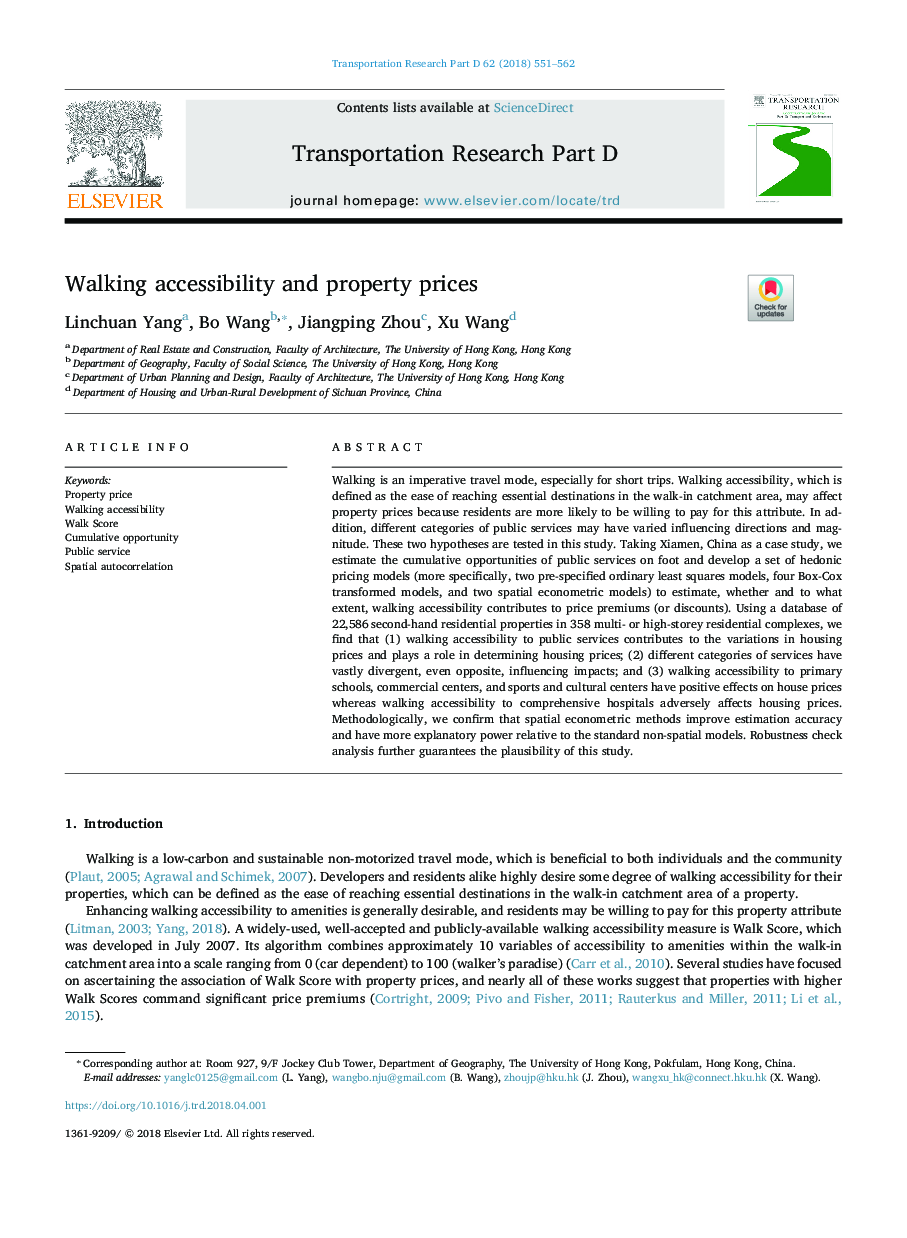| Article ID | Journal | Published Year | Pages | File Type |
|---|---|---|---|---|
| 7498846 | Transportation Research Part D: Transport and Environment | 2018 | 12 Pages |
Abstract
Walking is an imperative travel mode, especially for short trips. Walking accessibility, which is defined as the ease of reaching essential destinations in the walk-in catchment area, may affect property prices because residents are more likely to be willing to pay for this attribute. In addition, different categories of public services may have varied influencing directions and magnitude. These two hypotheses are tested in this study. Taking Xiamen, China as a case study, we estimate the cumulative opportunities of public services on foot and develop a set of hedonic pricing models (more specifically, two pre-specified ordinary least squares models, four Box-Cox transformed models, and two spatial econometric models) to estimate, whether and to what extent, walking accessibility contributes to price premiums (or discounts). Using a database of 22,586â¯second-hand residential properties in 358 multi- or high-storey residential complexes, we find that (1) walking accessibility to public services contributes to the variations in housing prices and plays a role in determining housing prices; (2) different categories of services have vastly divergent, even opposite, influencing impacts; and (3) walking accessibility to primary schools, commercial centers, and sports and cultural centers have positive effects on house prices whereas walking accessibility to comprehensive hospitals adversely affects housing prices. Methodologically, we confirm that spatial econometric methods improve estimation accuracy and have more explanatory power relative to the standard non-spatial models. Robustness check analysis further guarantees the plausibility of this study.
Related Topics
Life Sciences
Environmental Science
Environmental Science (General)
Authors
Linchuan Yang, Bo Wang, Jiangping Zhou, Xu Wang,
